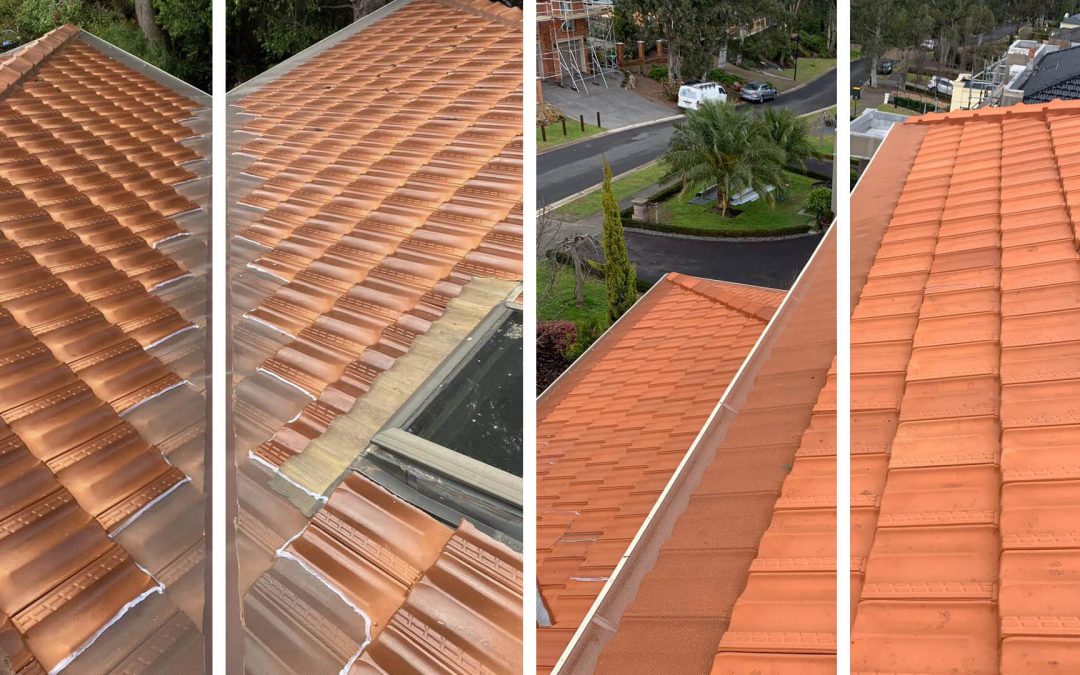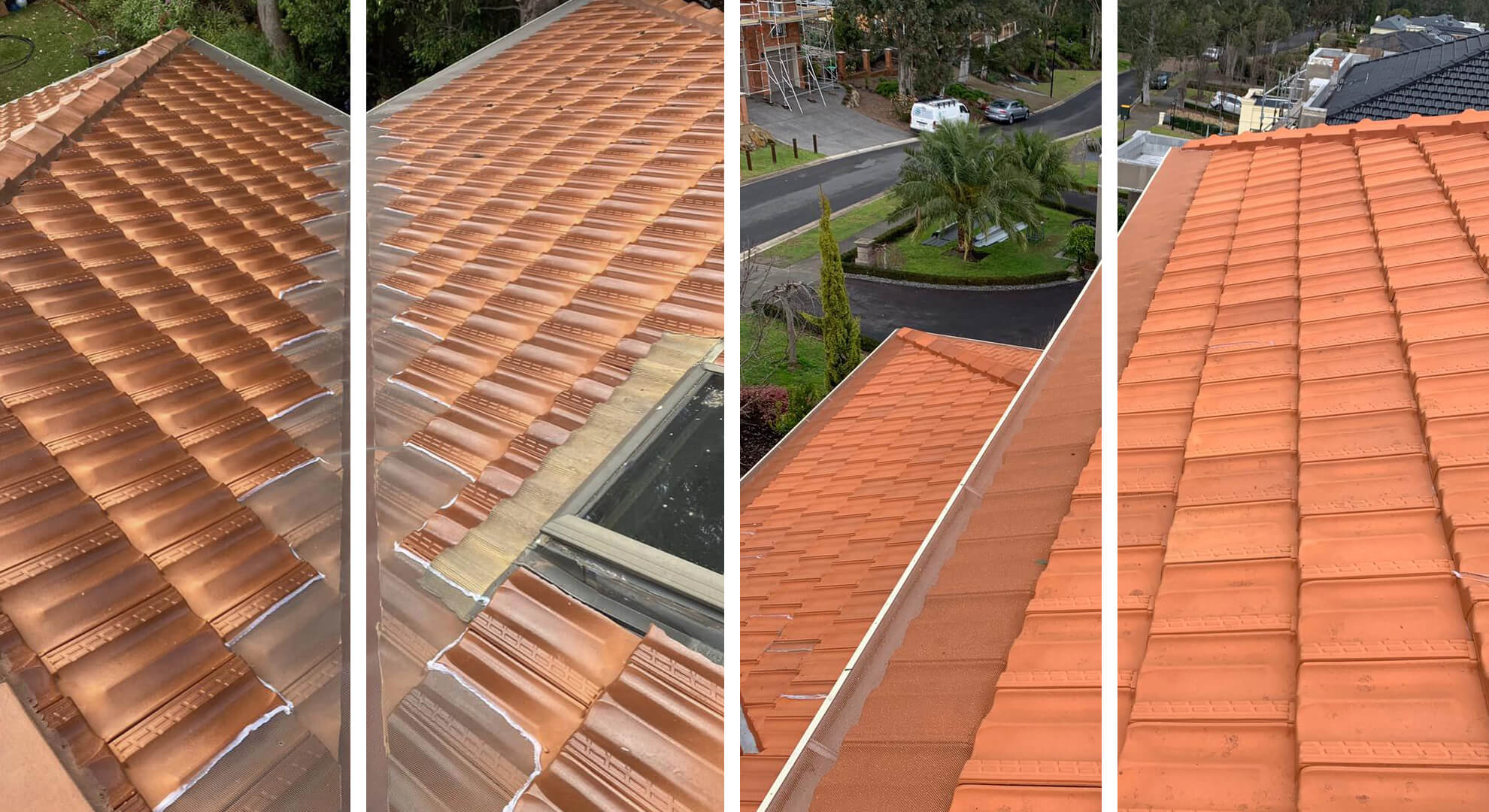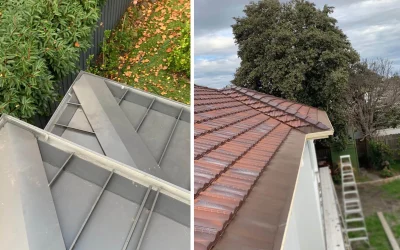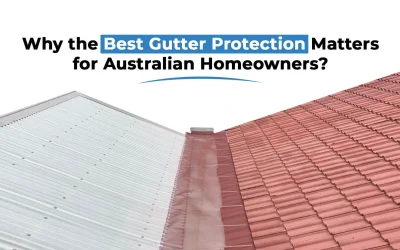Have you ever found yourself on a ladder, scooping out leaves and debris from your gutters on a sweltering Australian afternoon?
It’s not exactly how you’d like to spend your weekend, is it? Well, you’re not alone.
Many Australian homeowners are searching for the perfect solution to keep their gutters clean and their feet firmly on the ground.
Let’s dive into how you can identify the best gutter protection for your home, so you can say goodbye to those messy clean-ups.
Understanding the Importance of Gutter Protection
Before we jump into choosing the right gutter protection, it’s essential to understand why it’s so important. Gutters play a crucial role in directing rainwater away from your home, protecting your roof, walls, and foundation from water damage.
However, when they’re clogged with leaves, twigs, and other debris, they can’t do their job properly.
The Unique Challenges of the Australian Environment
Australia’s diverse climate and lush vegetation mean that gutters can quickly become clogged. From the leafy suburbs to the outback, each region presents its own set of challenges.
For instance, if you live near eucalyptus trees, their small leaves can easily slip into gutters. In bushfire-prone areas, dry leaves in gutters can be a fire hazard. Therefore, gutter protection isn’t just about convenience—it’s about safety too.
Types of Gutter Protection Systems
Now, let’s explore the different types of gutter protection available:
Mesh Screens
Mesh screens are placed over the top of your gutters to prevent debris from entering while allowing water to flow through. They come in various materials like plastic, aluminium, and stainless steel.
Gutter Guards
These are solid covers with slots or louvers that direct water into the gutter while keeping debris out. They can be a good option but might not handle heavy rainfall efficiently.
Foam Inserts
Foam inserts fit inside the gutter, blocking debris but allowing water to soak through. However, they can accumulate dirt over time and may require maintenance.
Brush Gutter Guards
Resembling a giant pipe cleaner, these are inserted into the gutter to trap debris on top while water flows underneath. They are easy to install but may not be the most effective for fine debris.
Factors to Consider When Choosing Gutter Protection
Selecting the best gutter protection involves considering several factors:
Material Quality:
Opt for materials that can withstand the harsh Australian climate. Stainless steel and aluminium are durable choices that resist rust and corrosion.
Ease of Installation
Some systems are DIY-friendly, while others may require professional installation. Consider your comfort level with installation or factor in the cost of hiring a professional.
Maintenance Requirements
The goal is to reduce maintenance, so choose a system that doesn’t require frequent cleaning or adjustments.
Cost
While it’s tempting to go for the cheapest option, investing in a quality system can save you money in the long run by preventing damage to your home.
Choosing the Right Material for Durability and Performance
When selecting gutter protection, the material it’s made from plays a significant role in its effectiveness and longevity. Australia’s diverse climates—from the humid coastal regions to the dry inland areas—mean that your gutter protection needs to withstand various weather conditions.
- Aluminium: Lightweight and resistant to rust, aluminium is a popular choice for many Australian homes. It handles heavy rain well and is easy to install. Additionally, aluminium gutter guards come in various finishes, allowing them to blend seamlessly with your home’s exterior.
- Stainless Steel: For those seeking maximum durability, stainless steel is hard to beat. It resists rust, corrosion, and extreme temperatures, making it ideal for areas with harsh weather conditions. While more expensive than other materials, its longevity often justifies the initial investment.
- Plastic: Plastic gutter protection systems are generally the most affordable option. They are lightweight and easy to install, making them suitable for DIY projects. However, they may not be as durable as metal options, especially in areas with extreme temperatures or heavy debris.
- Copper: Although not as common, copper gutter protection offers a unique aesthetic and exceptional durability. It’s resistant to rust and can last for decades with minimal maintenance. Copper is best suited for homeowners looking to add a touch of elegance to their gutter system.
Evaluating the Effectiveness of Gutter Protection Systems
Not all gutter protection systems are created equal. To ensure you’re selecting the best gutter protection in Australia, consider the following aspects of effectiveness:
- Debris Blocking Capability: The primary function of gutter protection is to keep leaves, twigs, and other debris out of your gutters. Assess how well a system blocks different types of debris common in your area, such as eucalyptus leaves or pine needles.
- Water Flow Efficiency: While blocking debris is essential, your gutter protection should still allow water to flow freely. Poor water flow can lead to overflow and potential water damage to your home.
- Durability Against Weather Elements: Australia’s weather can be unpredictable, with heavy rains, strong winds, and even hail in some regions. Ensure that your chosen gutter protection can withstand these elements without warping, cracking, or becoming dislodged.
- Ease of Cleaning and Maintenance: Even the best gutter protection systems require some maintenance. Look for designs that make it easy to remove any accumulated debris and clean the gutters without hassle.
Cost Considerations and Budgeting for Gutter Protection
Investing in gutter protection is a decision that involves weighing upfront costs against long-term benefits. Here’s how to approach budgeting for this project:
- Initial Costs: The price of gutter protection systems can vary widely based on the type, material, and brand. Mesh screens and foam inserts are generally more affordable, while stainless steel and copper options tend to be pricier.
- Installation Costs: If you opt for professional installation, factor in the labour costs. DIY installation can save money but ensure your account for any tools or additional materials you might need.
- Maintenance and Repairs: High-quality gutter protection can reduce maintenance costs by minimising the need for frequent cleanings and preventing gutter damage. However, some systems might require periodic upkeep to maintain their effectiveness.
- Long-Term Savings: By protecting your gutters and, consequently, your home’s foundation, roof, and walls, gutter protection can save you money on costly repairs in the future. Consider these potential savings when evaluating the overall cost.
Assessing Your Home’s Specific Needs
Every Australian home is unique, and so are its gutter protection needs. To identify the best gutter protection for your home, consider the following:
- Local Vegetation: The type and amount of foliage around your home significantly impact gutter clogging. Homes surrounded by dense trees with large leaves will require more robust gutter protection compared to those in areas with sparse vegetation.
- Roof Type and Pitch: The design of your roof affects how much debris falls into your gutters. Steeper roofs might shed leaves more efficiently, reducing the burden on your gutter protection system.
- Climate and Weather Patterns: Understanding your local climate helps in choosing a system that can handle the specific weather challenges you face, whether it’s heavy rain, strong winds, or extreme heat.
- Gutter Condition and Design: Assess the current state of your gutters. Older gutters might need repairs or replacement before installing new protection systems. Additionally, the shape and size of your gutters can influence which protection system will work best.
Environmental Considerations and Sustainability
Choosing an eco-friendly gutter protection system can benefit both your home and the environment. Here’s what to consider:
- Material Sustainability: Opt for systems made from recyclable or sustainable materials. Aluminium and stainless steel are not only durable but also recyclable, reducing their environmental impact.
- Water Conservation: Effective gutter protection ensures that rainwater is efficiently directed away from your home, preventing water wastage and potential flooding. Some systems can be integrated with rainwater harvesting setups, allowing you to collect and reuse rainwater for gardening and other purposes.
- Longevity and Waste Reduction: Investing in a long-lasting gutter protection system reduces the need for frequent replacements, minimising waste and conserving resources over time.
Making an Informed Decision
Choosing the best gutter protection for your Australian home involves careful consideration of various factors, from material quality and installation methods to cost and environmental impact. Here’s a quick recap to help you make an informed decision:
- Assess Your Needs: Consider your local vegetation, climate, and the specific challenges your home faces.
- Choose the Right Material: Select a material that offers durability and performance suited to your environment.
- Evaluate Installation Options: Decide whether you’ll install the system yourself or hire a professional.
- Consider Costs and Benefits: Weigh the initial investment against long-term savings and potential damage prevention.
- Research Top Brands: Look into reputable brands that offer reliable and effective gutter protection solutions.
- Check Warranties and Support: Ensure that the product comes with a solid warranty and that the company provides excellent customer support.
By taking these steps, you can confidently select the best gutter protection in Australia, ensuring that your home remains safe, dry, and free from the hassles of clogged gutters.
Our Verdict
Finding the perfect gutter protection for your Australian home doesn’t have to be overwhelming.
By understanding the unique challenges posed by the Australian environment and evaluating the different types of gutter protection systems available, you can make a choice that best suits your needs.
Whether you opt for a durable stainless-steel guard or a cost-effective mesh screen, the right gutter protection will save you time, money, and stress in the long run.
Remember to consider factors like material quality, installation methods, and maintenance requirements to ensure you select a system that offers both functionality and longevity. With the right gutter protection in place, you can enjoy a worry-free home, no matter what nature throws your way.
FAQs
1. How often should I clean my gutters even with gutter protection?
2. Can gutter protection help prevent roof leaks?
3. Are there any gutter protection systems that are eco-friendly?
4. Is it necessary to hire a professional for installing gutter protection?
5. How long does gutter protection typically last?
Social Share:
Related Posts
Why Autumn is the Critical Season for Gutter Protection in Australia?
Autumn in Australia is a season of transition, bringing cooler temperatures and a stunning…
Gutter Protection for Australian Homes Facing Bushfire and Heavy Rain Challenges
Australia’s weather is nothing short of dramatic. From bushfire seasons that threaten homes…
Why the Best Gutter Protection Matters for Australian Homeowners?
Your gutters play a critical role in protecting your home from water damage. But without…





